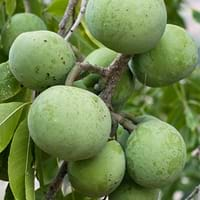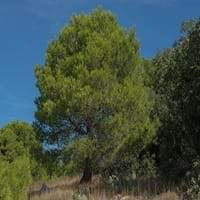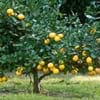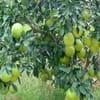Life Span
Perennial
Perennial
Type
Fruit
Needled or Scaled Evergreen
Origin
Mexico, Central America
Mediterranean, Turkey, Western Asia
Types
Reinikie, Dade, Pike, Suebelle and Golden
Climate
Not Available
Number of Varieties
Not Available
Habitat
Tropical Highlands
Woodland Garden Canopy
USDA Hardiness Zone
8-11
9-10
Sunset Zone
H1, H2, 14, 15, 16, 17, 18, 19, 20, 21, 22, 23, 24
7, 8, 9, 11, 12, 13, 14, 15, 16, 17, 18, 19, 20, 21, 22, 23, 24
Habit
Oval or Rounded
Oval or Rounded
Flower Color
Light Green, Ivory
Brown, Tan
Flower Color Modifier
Bicolor
Bicolor
Fruit Color
Light Yellow, Yellow green, Light Green
Tan
Leaf Color in Spring
Green, Dark Green
Green, Light Green
Leaf Color in Summer
Green, Dark Green
Green, Light Green
Leaf Color in Fall
Green, Dark Green
Green, Light Green
Leaf Color in Winter
Light Green
Green, Light Green
Leaf Shape
Alternate
Grass like
Plant Season
Spring, Summer, Fall, Winter
Spring, Summer, Fall, Winter
Sunlight
Full Sun
Full Sun
Type of Soil
Loam, Sand
Loam, Sand
The pH of Soil
Acidic, Neutral
Acidic, Neutral
Soil Drainage
Well drained
Well drained
Bloom Time
Winter, Late Winter
Early Spring
Tolerances
Drought
Drought
Where to Plant?
Ground
Ground
How to Plant?
Budding, Grafting, Seedlings, Vegetative
Seedlings
Plant Maintenance
Medium
Medium
Watering Requirements
Do not water frequently, Needs more water during establishment, Water during dry weather
Average Water Needs
In Summer
Lots of watering
Lots of watering
In Spring
Moderate
Moderate
In Winter
Average Water
Average Water
Soil pH
Acidic, Neutral
Acidic, Neutral
Soil Type
Loam, Sand
Loam, Sand
Soil Drainage Capacity
Well drained
Well drained
Sun Exposure
Full Sun
Full Sun
Pruning
Remove damaged leaves, Remove dead branches, Remove dead leaves
No pruning needed in the early stages, Prune to control growth
Fertilizers
All-Purpose Liquid Fertilizer
All-Purpose Liquid Fertilizer
Pests and Diseases
Red blotch
Red blotch
Plant Tolerance
Drought
Drought
Flowers
Insignificant
None
Flower Petal Number
Single
Single
Fragrant Flower
Not Available
No
Fragrant Bark/Stem
No
Yes
Foliage Texture
Medium
Fine
Foliage Sheen
Matte
Matte
Allergy
drowsiness
Not Available
Aesthetic Uses
Not Used For Aesthetic Purpose
Not Used For Aesthetic Purpose
Beauty Benefits
Not Available
Not Available
Environmental Uses
Air purification
Air purification
Medicinal Uses
Anti-carcinogenic effects, Colon Cancer
Not Available
Part of Plant Used
Fruits, Pulp, Seeds
Bark
Other Uses
Used As Food
Used in Furniture
Used As Indoor Plant
No
No
Used As Outdoor Plant
Yes
Yes
Garden Design
Edible, Fruit / Fruit Tree, Shade Trees, Tropical
Shade Trees, Street Trees, Topiary, Bonsai, Espalier
Botanical Name
CASIMIROA edulis
PINUS halepensis
Common Name
White Sapote
Aleppo Pine
In Hindi
White Sapote
हैलाब पाइन
In German
White Sapote
Aleppo-Kiefern
In French
Sapote blanche
pin d'Alep
In Spanish
White Sapote
Pino carrasco
In Greek
White Sapote
χαλεπίου πεύκης
In Portuguese
White Sapote
Aleppo Pine
In Polish
White Sapote
sosny Aleppo
In Latin
White Sapote
triumphabit Pine
Phylum
Magnoliophyta
Not Available
Class
Magnoliopsida
Pinopsida
Clade
Angiosperms, Eudicots, Rosids
Not Available
Tribe
Not Available
Not Available
Subfamily
Not Applicable
Scolytinae
Number of Species
Not Available
Difference Between White Sapote and Aleppo Pine
If you are confused whether White Sapote or Aleppo Pine are same, here are some features about those plants to help you choose better. Many people think that these two plants have the same characteristics, but one can see White Sapote and Aleppo Pine Information and learn more about it. Fertilizers required for proper growth of White Sapote are All-Purpose Liquid Fertilizer, whereas for Aleppo Pine fertilizers required are All-Purpose Liquid Fertilizer. Hence, one should know the basic difference between White Sapote and Aleppo Pine if you are planning to have them in your garden to enhance its beauty.
<
Flowering PlantsImportance of White Sapote and Aleppo Pine
Want to have the most appropriate plant for your garden? You might want to know the importance of White Sapote and Aleppo Pine. Basically, these two plants vary in many aspects. Compare White Sapote and Aleppo Pine as they differ in many characteristics such as their life, care, benefits, facts, etc. Every gardener must at least have the slightest clue about the plants he wants to plant in his garden. Compare their benefits, which differ in many ways like facts and uses. The medicinal use of White Sapote is Anti-carcinogenic effects and Colon Cancer whereas of Aleppo Pine is Not Available. White Sapote has beauty benefits as follows: Not Available while Aleppo Pine has beauty benefits as follows: Not Available.
Compare Facts of White Sapote vs Aleppo Pine
How to choose the best garden plant for your garden depending upon its facts? Here garden plant comparison will help you to solve this query. Compare the facts of White Sapote vs Aleppo Pine and know which one to choose. As garden plants have benefits and other uses, allergy is also a major drawback of plants for some people. Allergic reactions of White Sapote are drowsiness whereas of Aleppo Pine have Not Available respectively. Having a fruit bearing plant in your garden can be a plus point of your garden. White Sapote has showy fruits and Aleppo Pine has no showy fruits. Also White Sapote is not flowering and Aleppo Pine is not flowering . You can compare White Sapote and Aleppo Pine facts and facts of other plants too.





